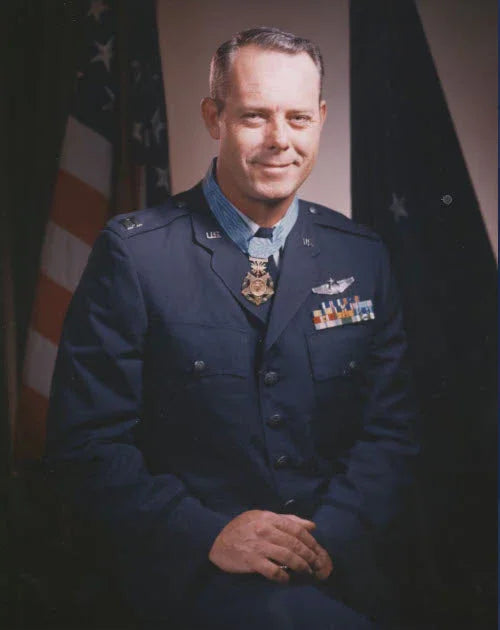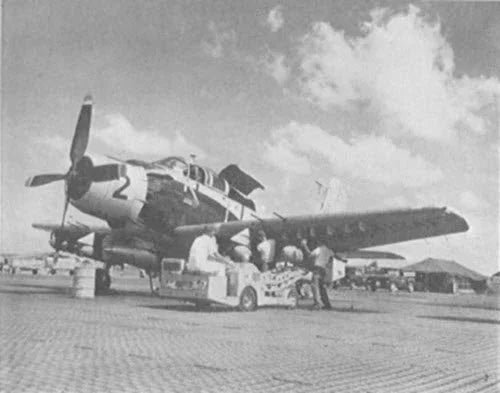The Jolly Green Giants
Last week I wrote the story about Surviving A Vietnam Rescue Mission. One of the heroes in the story was a helicopter called the "Jolly Green Giant" and it's crew.
This week we will take a deep dive into the Sikorsky HH-3E helicopter known as the Jolly Green Giant.
The National Museum Of The United States Airforce has a Skikorsky HH-3E Jolly Green Joint pictured below.

The Sikorsky HH-3E on display (serial number 67-14709) had a long and distinguished history.
The Sikorsky HH-3E (Sikorsky S-61R) earned the nickname Jolly Green Giant during the Vietnam War.
Assigned to the 37th Air Rescue and Recovery Squadron at Da Nang Air Base, South Vietnam, it flew with the call sign Jolly Green 22 in the Southeast Asia War.
The U.S. Air Force developed the Sikorsky HH-3E helicopter, nicknamed the "Jolly Green Giant," to perform combat search and rescue (CSAR) to recover downed Airmen during the Southeast Asia War.
It was a highly modified version of Sikorsky's CH-3 transport helicopter, and the HH-3E carried both armor plating and armament to protect it from hostile forces during rescues of aircrews in a combat areas.
It was the first helicopter capable of being air refueled using a retractable fuel probe along with external tanks to give it a range limited only by the ability of the air crew to continue operations.

A closer look at the Sikorsky HH-3 in the Southeast Asia War Gallery at the National Museum of the United States Air Force.
These utility helicopters had flown in the states supporting Strategic Air Command's remote missile sites. In Vietnam the armed birds carried Army Special Forces teams to isolated landing zones in Vietcong-controlled areas.
After the green berets had observed enemy activity, they would rendezvous with the helicopter at a predetermined time for pickup and evacuation. If the small team was attacked by a large enemy force, they would radio the transport birds for immediate pickup.
The Aircraft
The versatile Sikorsky HH-3E "Jolly Green Giant" could operate from land or water. The big rescue ship was manned by a crew of four and armed with two mini-machineguns.

Sikorsky HH-3E Jolly Green Giant. (U.S. Air Force)
Weighing over 11 tons, the cargo version could carry a 5,000-pound load or 25 combat-ready troops. Twin turbine engines powered the chopper at a top speed of 165 miles per hour.
The helicopter is flown by two pilots with a crew that included a flight mechanic and gunner. It is a large twin-engine helicopter with a single main rotor/tail rotor configuration.
It has retractable tricycle landing gear and a rear cargo ramp. The rear landing gear retracts into a stub wing on the aft fuselage. The helicopter has an extendable inflight refueling boom.
Specifications:
- Crew: Four (pilot, copilot, flight mechanic/engineer, gunner);
- Length: 72 feet, 7 inches;
- Height: 18 feet, 10 inches tall;
- Empty Weight: 13,341 pounds;
- Maximum Gross Weigh: 22,050 pounds;
- Engines: Two GE T58-GE-5 engines which have a maximum continuous power rating of 1,400 shaft horsepower each. The main transmission is rated for 2,500 hp maximum
- Cruise Speed: 154 mph, with a mximum speed of 177 mph;
- Service System: 14,000 feet;
- Maximum Range: 779 miles with external fuel tanks;
- Amament: Two M60 7.62mm machine guns.
- Cargo: 25 passenters or 15 litters with two attendants.
Sikorsky built 14 HH-3Es. Many CH-3Cs and CH-3Es were upgraded to the HH-3E configuration. Sikorsky built a total of 173 of the S-61R series.
The first USAF HH-3Es arrived in Vietnam in 1967, and they operated out of Udorn Air Base, Thailand, and Da Nang Air Base, South Vietnam.
The Sikorsky HH-3E on display (serial number 67-14709) had a long and distinguished history. Assigned to the 37th Air Rescue and Recovery Squadron at Da Nang Air Base, South Vietnam, it flew with the call sign Jolly Green 22 in the Southeast Asia War.
On March 14, 1968, a two-ship helicopter rescue team attempted to rescue the aircrew of a U.S. Marine Corps F-4 Phantom shot down over North Vietnam. One of the two crewmen was picked up, but heavy enemy machine-gun fire forced the rescuers to withdraw before saving the second Marine.
Enemy fire had damaged Jolly Green 22, but its crew made a second attempt to rescue the stranded Marine. Meanwhile, the North Vietnamese had killed the Marine and set up an ambush for the returning rescuers.
Despite intense enemy fire, Jolly Green 22 escaped the trap with 68 bullet holes, a shot-out windshield, and holes through the rotor blades.
I hope you enjoyed this trip through some of the history of aviation. If you enjoyed this trip, and if you are new to this newsletter, sign up to receive your own weekly newsletter here: Subscribe here!
Until next time, keep your eyes safe and focused on what's ahead of you, Hersch!







Leave a comment
This site is protected by hCaptcha and the hCaptcha Privacy Policy and Terms of Service apply.